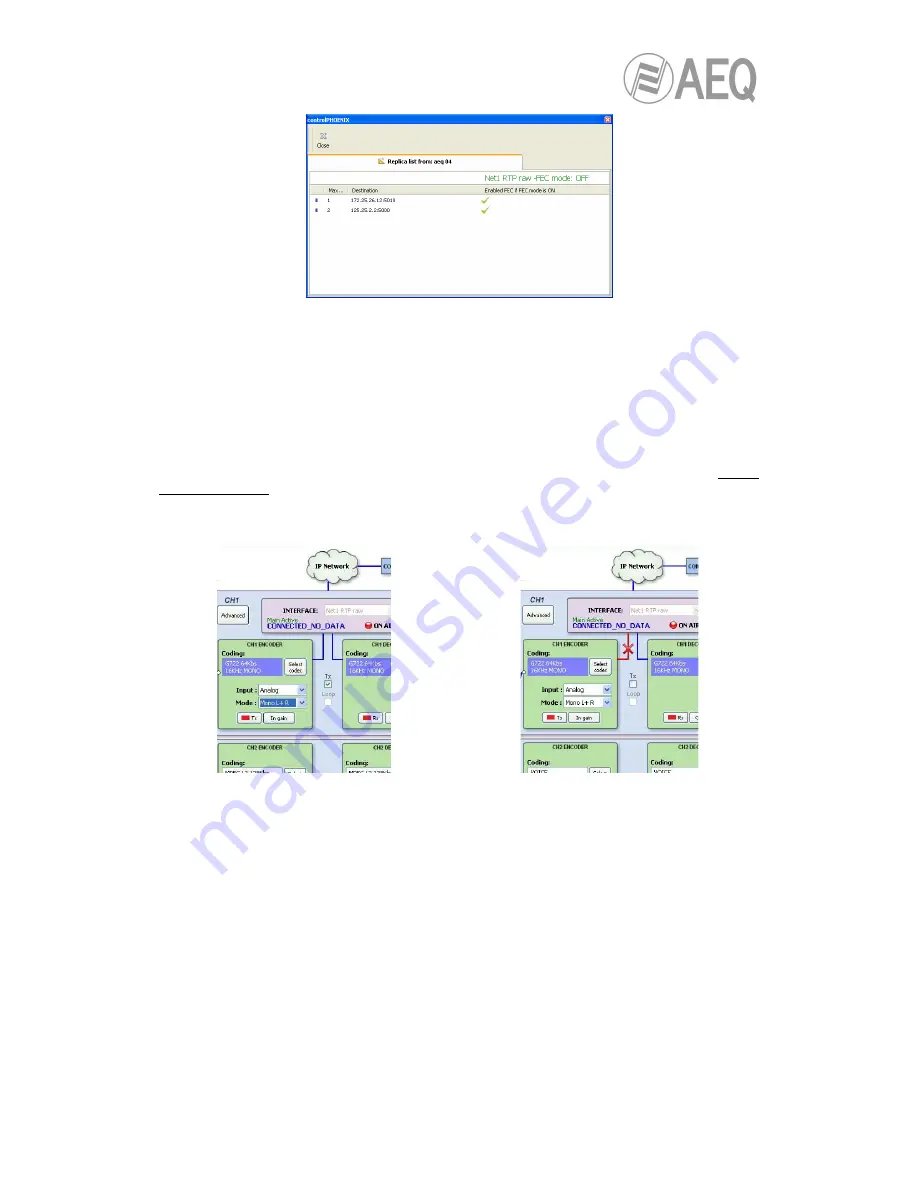
AEQ
PHOENIX STRATOS
61
You can add replicas to a RTP call (or edit the existing ones) by previously creating a contact
that includes them (or by editing a existing contact). See section 5.1.7.1 of of “AEQ
ControlPHOENIX“ user’s manual.
Those replicas or parallel streams are only IP+port pairs we want to send the audio to. Note
that, when creating/editing the contact, FEC mode can be individually activated or disabled
provided that it was enabled (and configured) in the general channel configuration. When the
previous list is empty, the stream is being sent to the IP+port indicated in the Call window.
NOTE 1: When audio is sent to several destinations, the transmitting unit can receive audio
from only one of them (or none). In order to determine which one is sending audio back, only in
RTP Raw mode, a control will appear in the general configuration window next to the
ENCODER output allowing us to disable the transmission to the IP channel. Make sure that only
one of the receiving equipments is enabled to transmit:
Channel transmission activated
Channel transmission inhibited
NOTE 2: Advanced contacts (those allowing specification of the communication mode, coding
algorithm/profile, replicas, etc) can only be stored in the General agenda, that is saved in a
database in the control PC. These contacts can however be copied to the different devices, but
the advanced fields (interface, coding algorithm, SIP account / provider and replicas) will be
lost, so only the contact name and contact data (main IP:port or destination URI) will be stored.
NOTE 3: It is possible to use multiple-unicast transmission with “SmartRTP“ active. The
transmitter unit must be the one that generates the calls, and when it hangs up, it will send
notifications to the MAIN destination only (not in the replicas). As a consequence, only this one
will hang-up. If the user needs that all receivers hang-up too, the “Auto Hang-Up” option can be
activated on them defining a reasonable time (let’s say, 5-10 seconds).
If, on the other hand, we need to cut the call from a receiver, only that with transmission
enabled will make the others hang-up (even if it is not the main receiver).
Please read the application notes published by AEQ regarding IP connectivity for more
information on IP communications in particular scenarios.






























